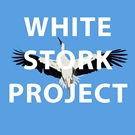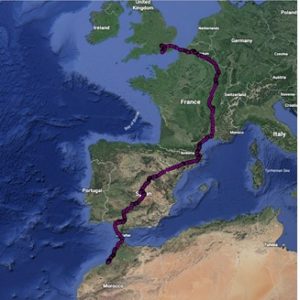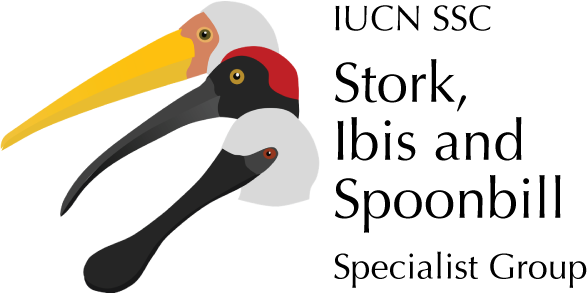
![]()
The White Stork Project is led by a pioneering partnership of private landowners and nature conservation organisations, who are working together to restore a self sustaining, free living, breeding population of white storks in southern England by 2030 through a phased release programme which will run over the next five years.
These large birds, symbolic of rebirth, were once widely distributed throughout the UK with archaeological evidence dating back 360,000 years, records of them being consumed at medieval banquets, descriptions of the species in bestiaries, woodcuts, poems, poetry and in early bird books. There is even evidence left today in place names, our local town of Storrington has been known throughout the years as ‘Estorchestone’, ‘Storkton’, ‘Storgton’ and ‘Storca-tun’ meaning ‘homestead with storks’. To this day the town uses the white stork as their emblem, seen on signs and flower tubs, local groups also use it as their logo.
Whilst it is unclear why this spectacular and sociable bird failed to survive in Britain, it is likely that a combination of habitat loss, over-hunting and targeted persecution all contributed to their decline.
The white stork is a migratory species and there have been many sightings in the UK over recent years (34 recorded sightings between 1995 to 2011), now with around 20-30 vagrants being spotted every year. Despite this and the presence of extensive areas of suitable habitat the breeding ecology of the species, in particular strong natal philopatry, their tendency to settle near one another and colonial nesting behaviours it is thought unlikely that the species would re-establish a breeding population in Britain without help.
![]()
The re-establishment of the white storks is being carried out in three stages, each with its own purpose. The first stage was to establish a static population at Knepp and this was carried out in 2016/17. This first cohort of 25 birds arrived from Warsaw Zoo in Poland, where they run a rehabilitation programme for injured storks. These first birds are all individuals who cannot be released into the wild due to the injuries they suffered in the wild, many of them are unable to fly because of permanent wing damage. They were placed in the 6 acre open enclosure at Knepp where they settled quickly. The purpose of having this static population of flightless birds is to act as a magnet for any birds flying to the UK and within just 3 months of receiving the storks we had our first wild visitors.
The second stage is to have free flying birds which are ‘hefted’ to Knepp. To do this, birds which came to us in 2018 are able to fly and placed in a large netted aviary within the 6 acre enclosure, here they spend 2 winters with us before being released. These birds will be ready to leave later this year.

Stage three is the release of a migratory population of juveniles. On 1st August we received 24 fully fledged British bred storks from Cotswold Wildlife Park, our partner who is undertaking the captive breeding programme for the project. Just 2 weeks after arriving they were released from Knepp, so far a number of these young storks have crossed the English channel and are on the continent. Each of our release storks have blue Darvic rings on their upper left leg, each with an individual code beginning with GB and 8 of the 24 juveniles are fitted with GPS transmitters. This will allow us to track their migration and the data we gather will be invaluable to the project and research being done on the species. One individual has successfully migrated south to Morocco, joining storks from across Europe in their winter feeding grounds, which is a great success for the project.
Plans are in place for a further group of juveniles, again captive bred at Cotswold Wildlife Park, to be released from Knepp in late summer 2020. There are a number of wild pairs building nests at Knepp and it is hoped that the juveniles released will supplement those coming from nests in the wild. The White Stork Project Officer will be monitoring birds and nests at the release sites and we expect to have a number of the released juveniles to be GPS tracked.
For more information on the UK White Stork Project see our website www.whitestorkproject.org and for updates see @ProjectStork on twitter.
